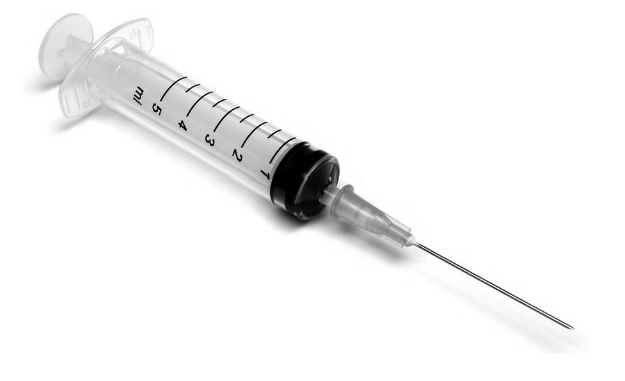The Monroe County Coalition, dedicated to drug-awareness efforts, is having a meeting on Tuesday, Jan. 17 at 2 p.m. at the Department of Children and Families, 1111 12th St., Key West. Speakers will address marijuana legalization progress, presence of opiates in Monroe County and substance abuse trends.
Jim Hall will be presenting on the 2016 Florida Youth Substance Abuse Survey. For the last 30 years, Hall has tracked patterns and trends of substance abuse in Florida as the state’s representative on the National Institute on Drug Abuse’s Community Epidemiology Work Group. Hall’s work focuses on converting research about emerging drug abuse problems into community-based solutions.
What, exactly, does it do to the human body?
By Kim Bassett
Q. What is Heroin?
Heroin is processed from morphine, and can be smoked, snorted or injected into veins or muscles. The drug binds to and activates specific receptors in the brain causing you to become addicted to it both physically and psychologically. According to the National Institute on Drug Abuse, in 2011, 4.2 million Americans over the age of 12 had tried heroin at least one time, with 23 percent of those individuals becoming dependent on the substance as a result. The Centers for Disease Control (CDC) just reported that there are more deaths from heroin than from gunfire.
Q. Why is heroin so dangerous?
Heroin is incredibly addictive, it’s cheap and relatively easy to obtain. Addicts come in all shapes and sizes and all walks of life, wealthy, poor, homeless, parents, children. Addiction knows no bounds. One of the most dangerous things is that no one really knows what is mixed in with the heroin they buy. Ingredients can vary wildly. Some batches are more “pure” than others. Some heroin even has strychnine, a toxic substance used as a pesticide, mixed in with it.
In addition to the unknown ingredients, heroin is dangerous because it interferes with the area of the brain that controls auto-functioning, such as breathing and reaction time. When combined with other consciousness-altering substances like alcohol, the effects can be deadly that much more quickly.
Q. What draws people to use heroin?
People use heroin for any number of reasons, sometimes pain relief, other times for the fun of the high. Often people begin their drug addiction through the use of prescription medications, after an accident, surgery or some disease. When their physician stops prescribing the medication or they cannot afford to buy the prescription medication, they turn to the much cheaper heroin as a substitute. Pain medications such as oxycontin or oxycodone have properties similar to heroin.
Heroin is known to cause an initial rush of euphoria, making the user feel happy, even euphoric. As the drug leaves the system, this is replaced by anxiety, restlessness and even depression. Each time a person uses heroin, more of the drug must be used to achieve the same “high.”
Q. What happens to your body when you take heroin?
Immediate reactions include clouded mental functioning and slowed cardiac and respiratory functioning, which can lead to asphyxiation and/or heart attack. Long-term effects include soft tissue infections, liver or kidney disease, AIDS, hepatitis and other blood-borne illnesses, permanent damage to soft nasal tissue, chronic insomnia and sexual dysfunction.
Q. How does heroin affect the brain?
Heroin addiction is one of the hardest addictions to beat. Relapse is common because the drug actually changes your brain. Once heroin enters the brain, it is converted back to morphine, a powerful drug used primarily to block pain. The morphine then binds to existing opioid receptors in the brain, which causes the feeling of pain relief and euphoria at 10 times the normal dopamine levels. By exposing your body to increased levels of dopamine, your body adjusts and builds a tolerance. The result is a lower pain threshold. Some studies have shown that these changes can occur after a single dose of heroin, resulting in the user “needing” more and more heroin just to feel “normal.”
I once heard a physician/researcher explain that heroin works in the same area of the brain that controls breathing and heartbeats. He explained that heroin becomes as important as breathing. Once addicted, your body believes you must have heroin in order to live — just like breathing. This makes it incredibly difficult to stop using.
Q. How is heroin addiction treated?
To begin tackling heroin addiction, both the physical and psychological must be addressed. Thankfully, a wide range of behavioral modification methods exist to address primarily the psychological aspect of heroin addiction. These include traditional detox programs, counseling, and behavioral therapy, relapse prevention, coping and skills training, and support group participation. In conjunction with these programs, specific medications can be used to help wean the patient’s dependence.
— Kim Bassett is a registered nurse and health care executive with more than 25 years experience. To see her full bio, visit www.kimbassettceo.com.
Heroin by the numbers
By Sara Matthis
In an effort to quantify the heroin problem in the Florida Keys, the Weekly reached out to the Monroe County Medical Examiner’s Office, Monroe County Emergency Medical Services and Marathon EMS.
“We are certainly seeing more heroin and arrests related to heroin in the Keys, just as is the rest of the country. The increased prevalence of heroin – and the fact that it is often mixed with other, more dangerous and potent drugs – is certainly becoming an issue for our agency as well as for other agencies related to emergency services,” said Becky Herrin, public information officer for Monroe County Sheriff’s Office. “As far as any areas of the Keys being worse or better, we are seeing it in all areas of the Keys. I would not single out one area in particular as being better or worse.”
16
Heroin-related arrests made by Monroe County Sheriff’s Department in 2016.
4
Of the 32 deaths in Monroe County from January to June of 2016, four persons had the presence of heroin in their system plus other drugs such as cocaine and fentanyl . All of them were labeled accidental deaths. Data for the second half of 2016 is not available.
11
Of the 32 deaths in Monroe County from January to June of 2016, eleven persons had the presence of other opiates in their system such as oxycodone, morphine, codeine and fentanyl. All but one were labeled accidental; the exception was a suicide.
59
The number of times Narcan was administered by Marathon EMS professionals during 2016. Narcan is given to patients who are overdosing. It blocks the effects of opioids and reverses the overdose.
5
The number of times Romazicon was administered by Marathon EMS professionals during 2016. Romazicon is given to patients who have overdosed on Valium or Xanax.
43
The number of times Narcan was administered by Monroe County EMS professionals during only five months of 2016. Data for the full year was not available. In comparison, only 41 doses were administered for the entire year of 2015, and 34 doses in 2014.
Need help for yourself or a loved one?
• DrugAbuse.com or 1-877-310-9512
• TheTreatmentCenter.com or 1-855-873-4511
• AmericanAddictionCenters.org or 888-611-2695
• AlcoholAndDrugsRehabFinder.com or 1-888-900-3664
• Therapists.psychologytoday.com (Find an addiction therapist in your area.)



























